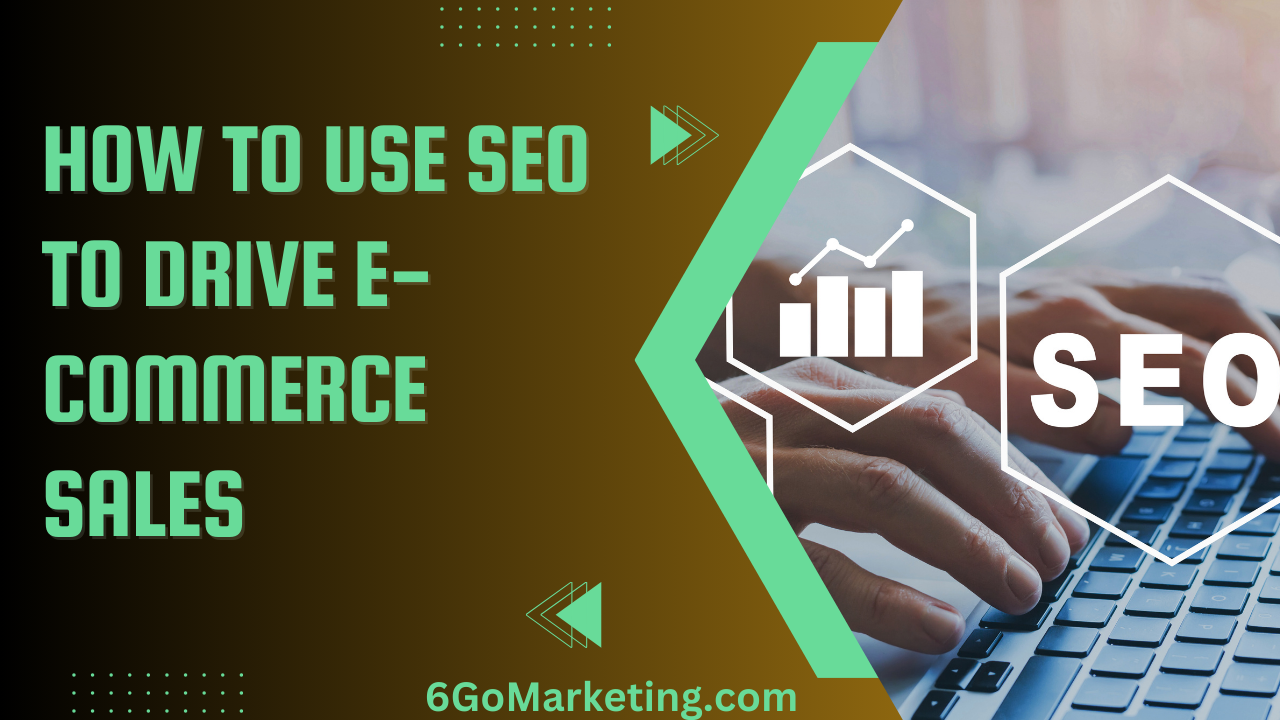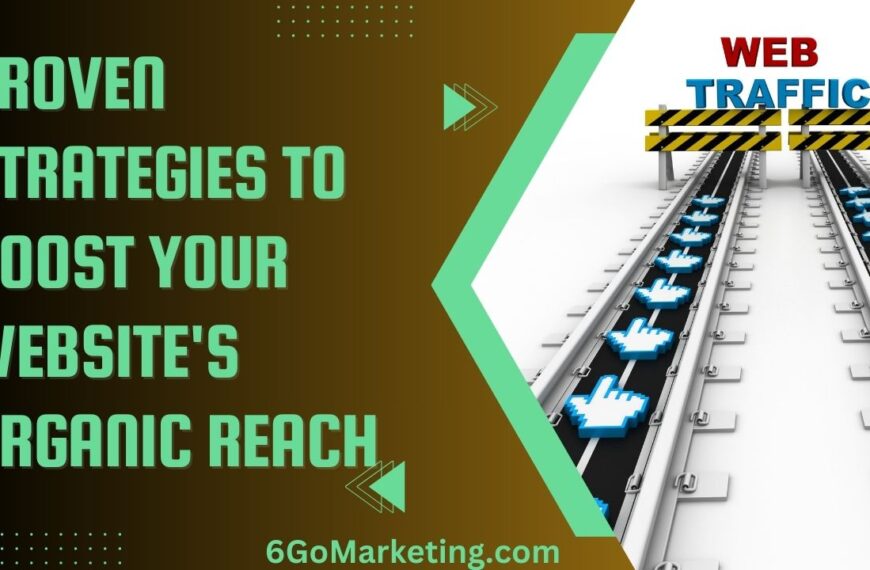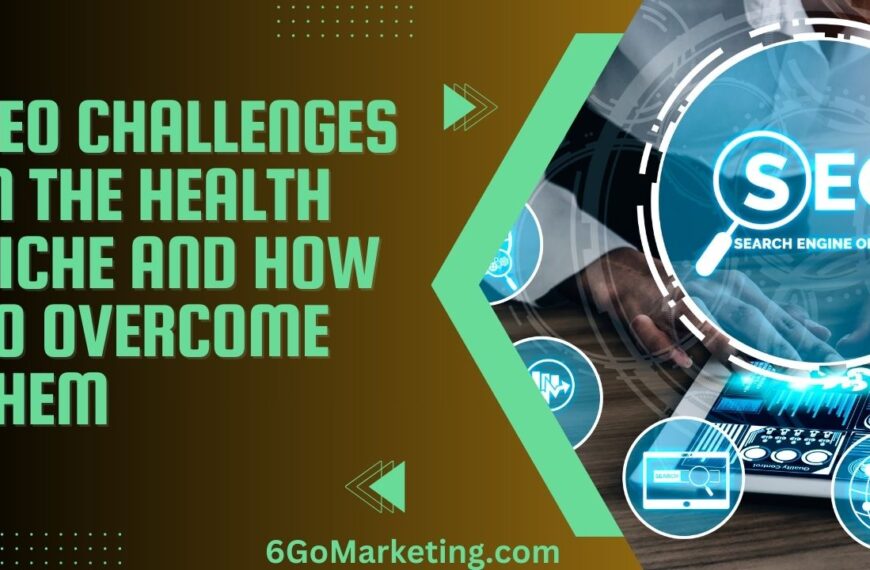In the highly competitive world of e-commerce, standing out from the crowd can be challenging. With millions of online stores vying for consumer attention, it’s crucial to implement effective strategies that not only attract visitors but also convert them into paying customers. Search Engine Optimization (SEO) is one of the most powerful tools in your marketing arsenal to achieve this. By optimizing your e-commerce website for search engines, you can drive organic traffic, increase visibility, and ultimately boost sales.
This blog post will guide you through the essential SEO strategies you need to implement to drive e-commerce sales. From on-page optimization and keyword research to technical SEO and link building, we’ll cover everything you need to know to improve your search rankings and grow your online business.
Understanding the Importance of SEO for E-commerce
Before diving into the specifics, it’s important to understand why SEO for e-commerce is so vital. Unlike paid advertising, which can be expensive and short-lived, SEO provides a sustainable way to attract organic traffic to your online store.
Understanding what is white label SEO and using it can be a cost-effective solution for agencies looking to offer SEO without increasing overhead.
When done correctly, SEO not only helps your website rank higher in search engine results pages (SERPs) but also ensures that you’re attracting the right kind of traffic—visitors who are actively searching for the products you offer. This matters particularly in SEO for higher education campaigns, given that for universities, higher online visibility means more website visits, more inquiries, and ultimately, more enrollments.
According to a study by BrightEdge, organic search drives 53% of all website traffic, making it the largest source of traffic for most websites. Additionally, a report by HubSpot found that 75% of users never scroll past the first page of search results. This underscores the importance of ranking on the first page for relevant keywords to maximize visibility and sales opportunities.
Table 1: Key Benefits of SEO for E-commerce
| Benefit | Description |
|---|---|
| Increased Organic Traffic | Attract visitors who are actively searching for your products |
| Higher Conversion Rates | Targeted traffic leads to better conversion rates |
| Cost-Effective Marketing | SEO provides long-term results without ongoing ad spend |
| Enhanced Brand Visibility | Higher rankings improve brand awareness and credibility |
| Competitive Advantage | Outrank competitors and capture a larger share of the market |
Keyword Research: The Foundation of E-commerce SEO
Keyword research is the cornerstone of any successful SEO strategy. For e-commerce websites, identifying the right keywords is crucial because it helps you understand what potential customers are searching for and how they search for it. Whether you’re selling high-end luxury items like Swarovski jewelry or everyday products, targeting the right keywords can attract high-intent traffic more likely to convert into sales. By targeting the right keywords, you can attract high-intent traffic that is more likely to convert into sales.
- Types of Keywords to Target:
- Short-Tail Keywords: These are broad and general keywords with high search volume but also high competition. Examples include “running shoes” or “women’s clothing.”
- Long-Tail Keywords: These are more specific phrases with lower search volume but higher intent and lower competition. Examples include “best running shoes for flat feet” or “affordable women’s summer dresses.”
- Product Keywords: Keywords that include the specific name or model of a product, such as “Nike Air Max 270” or “iPhone 13 case.”
- Transactional Keywords: Keywords that indicate a user’s intent to make a purchase, such as “buy,” “discount,” “free shipping,” or “best price.”
- Keyword Research Tools:
- Google Keyword Planner: A free tool from Google that provides keyword ideas, search volume, and competition data.
- Ahrefs: A comprehensive SEO tool that offers keyword research, competitor analysis, and backlink tracking.
- SEMrush: Another powerful tool for keyword research, competitive analysis, and rank tracking.
- Ubersuggest: A user-friendly tool for discovering keyword ideas, search volume, and content suggestions.
- Analyzing Competitors:
- Identify your top competitors and analyze the keywords they are ranking for. Tools like Ahrefs and SEMrush allow you to enter a competitor’s URL and see the keywords driving traffic to their site. This can help you identify gaps and opportunities in your own keyword strategy.
Table 2: Types of E-commerce Keywords
| Keyword Type | Example | Search Volume | Competition | Conversion Intent |
|---|---|---|---|---|
| Short-Tail Keyword | Running shoes | High | High | Low |
| Long-Tail Keyword | Best running shoes for flat feet | Medium | Medium | High |
| Product Keyword | Nike Air Max 270 | Medium | High | High |
| Transactional Keyword | Buy running shoes online | Low | Low | Very High |
On-Page SEO: Optimizing Your E-commerce Pages
On-page SEO refers to the optimization of individual pages on your website to rank higher in search results. For e-commerce sites, this involves optimizing product pages, category pages, and even your homepage to ensure they are search engine friendly.
- Optimizing Product Pages:
- Title Tags and Meta Descriptions: Use relevant keywords in your title tags and meta descriptions to help search engines understand what your page is about. Make sure your title tags are under 60 characters and your meta descriptions under 160 characters.
- Product Descriptions: Write unique, detailed product descriptions that incorporate your target keywords. Avoid using manufacturer descriptions, as duplicate content can harm your rankings.
- Images and Alt Text: Optimize your product images by compressing them for faster load times and using descriptive alt text that includes keywords. This not only improves SEO but also makes your site more accessible.
- User Reviews: Encourage customers to leave reviews on your product pages. User-generated content adds value, builds trust, and can improve your search rankings.
- Optimizing Category Pages:
- Keyword Usage: Include primary and secondary keywords in your category page titles, meta descriptions, and headers. Use variations of your primary keywords to capture different search intents.
- Internal Linking: Link to related products or subcategories within your category pages. This helps distribute link equity across your site and improves the user experience.
- Content and Structure: Add relevant content to your category pages, such as buyer’s guides, FAQs, or related blog posts. This provides additional value to visitors and enhances your SEO.
- Technical SEO for E-commerce:
- Site Speed: Ensure your website loads quickly, as page speed is a ranking factor for Google. Use tools like Google PageSpeed Insights to identify areas for improvement. Working with local SEO specialists can help you implement these technical fixes, aligning your site’s performance with local search expectations and requirements.
- Mobile Optimization: With the majority of online shopping now done on mobile devices, it’s crucial that your site is mobile-friendly. Use responsive design and test your site on multiple devices.
- URL Structure: Keep URLs short, descriptive, and keyword-rich. Avoid using complex parameters in your URLs, as this can confuse both users and search engines.
- Secure Website (HTTPS): Make sure your site is secure by using HTTPS. Google gives preference to secure sites, and consumers are more likely to trust a site with a secure connection.
Table 3: On-Page SEO Checklist for E-commerce
| SEO Element | Best Practices |
|---|---|
| Title Tags | Include primary keywords, keep under 60 characters |
| Meta Descriptions | Summarize content, include keywords, keep under 160 characters |
| Product Descriptions | Write unique, keyword-rich content |
| Image Optimization | Compress images, use descriptive alt text |
| User Reviews | Encourage reviews, respond to feedback |
| Category Pages | Use primary and secondary keywords, add valuable content |
| Site Speed | Optimize load times, use Google PageSpeed Insights |
| Mobile Optimization | Implement responsive design, test on various devices |
| URL Structure | Use short, descriptive URLs, include keywords |
| HTTPS | Secure your site with HTTPS |
Content Marketing for E-commerce SEO
Content marketing plays a significant role in driving organic traffic and improving search rankings for e-commerce sites. By creating valuable, relevant content that addresses your audience’s needs, you can attract more visitors, build trust, and ultimately drive more sales.
- Blogging for SEO:
- Targeting Long-Tail Keywords: Use your blog to target long-tail keywords that may not fit naturally on product pages. For example, if you sell kitchen appliances, you could write blog posts on topics like “How to Choose the Best Blender for Smoothies” or “Top 10 Energy-Efficient Refrigerators for Small Kitchens.”
- Educational Content: Create how-to guides, tutorials, and product comparisons that help customers make informed purchasing decisions. This type of content not only attracts organic traffic but also positions your brand as an authority in your niche.
- Seasonal Content: Write blog posts that align with seasonal trends or holidays. For instance, if you sell outdoor tactical gear, you could create content around “Essential Camping Gear for Summer” or “Best Winter Jackets for Extreme Cold.”
- Product Guides and Tutorials:
- Develop comprehensive product guides that highlight the features, benefits, and uses of your products. Include relevant keywords and internal links to related products to improve SEO and encourage visitors to explore your site further.
- Video Content:
- Videos are highly engaging and can boost your SEO efforts. Create product demonstration videos, unboxing videos, or customer testimonials and embed them on your product pages and YouTube channel. Ensure that each video is optimized with relevant keywords in the title, description, and tags. Utilizing saas video marketing can help increase engagement and drive traffic to your website. Ensure that each video is optimized with relevant keywords in the title, description, and tags.
- User-Generated Content:
- Encourage customers to share their experiences with your products on social media and tag your brand. You can feature this content on your website or blog, adding social proof and enhancing your SEO with fresh, relevant content.
Table 4: Content Marketing Strategies for E-commerce SEO
| Strategy | Example | SEO Benefit |
|---|---|---|
| Blogging for SEO | Writing blog posts targeting long-tail keywords like “Best eco-friendly kitchen gadgets” | Attracts niche audiences, improves search rankings for specific queries |
| Educational Content | Creating how-to guides, tutorials, and product comparisons | Positions brand as an authority, drives organic traffic |
| Seasonal Content | Writing posts like “Top Holiday Gift Ideas for Tech Lovers” | Captures seasonal search traffic, increases relevancy |
| Product Guides & Tutorials | Developing in-depth guides such as “Ultimate Guide to Choosing the Right Mattress” | Boosts keyword relevance, encourages longer site visits |
| Video Content | Producing product demonstration videos or unboxing videos | Increases engagement, enhances on-page SEO with rich media |
| User-Generated Content | Featuring customer photos and reviews on product pages | Adds fresh content, builds social proof, improves trust |
Technical SEO for E-commerce
While on-page SEO focuses on content and keyword optimization, technical SEO deals with the behind-the-scenes aspects of your website that affect search engine crawling, indexing, and ranking. A solid technical SEO foundation is crucial for ensuring that your e-commerce site is easily discoverable by search engines and provides a seamless user experience.
- Site Architecture and Navigation:
- A well-structured site architecture makes it easy for both users and search engines to navigate your site. Ensure that your website has a clear hierarchy, with categories and subcategories logically organized. Use breadcrumb navigation to help users and search engines understand the relationship between different pages.
- XML Sitemap:
- An XML sitemap is a file that lists all the pages on your website, helping search engines crawl and index your content more efficiently. Make sure your sitemap is up-to-date and includes all important pages, such as product pages, category pages, and blog posts.
- Robots.txt File:
- The robots.txt file tells search engines which pages or sections of your site should not be crawled or indexed. Use this file to block irrelevant or duplicate content, such as admin pages or filtered product pages, from being indexed.
- Canonical Tags:
- Canonical tags are used to prevent duplicate content issues by specifying the “preferred” version of a page when multiple versions exist. For example, if your product pages can be accessed via different URLs due to filters or parameters, use canonical tags to point search engines to the primary URL.
- Page Speed Optimization:
- Page speed is a crucial ranking factor for SEO and directly impacts user experience. Optimize your website’s load times by compressing images, minimizing HTTP requests, and leveraging browser caching. Tools like Google PageSpeed Insights and GTmetrix can help you identify and fix speed-related issues.
- Mobile Optimization:
- With more than half of all web traffic coming from mobile devices, ensuring that your e-commerce site is mobile-friendly is essential. Use responsive design to provide a consistent experience across devices, and avoid using Flash or other elements that don’t work well on mobile.
- Structured Data and Rich Snippets:
- Structured data, also known as schema markup, helps search engines understand the content on your pages more effectively. For e-commerce sites, using structured data can enable rich snippets, such as product ratings, prices, and availability, to appear in search results. This can improve click-through rates (CTR) and drive more traffic to your site.
Table 5: Technical SEO Elements for E-commerce
| Technical SEO Element | Description | Benefit for E-commerce |
|---|---|---|
| Site Architecture | Organize content with a clear hierarchy and breadcrumb navigation | Improves user experience, helps search engines crawl pages |
| XML Sitemap | Lists all pages for efficient crawling and indexing | Ensures all important pages are indexed |
| Robots.txt File | Controls which pages are crawled or blocked | Prevents indexing of irrelevant or duplicate content |
| Canonical Tags | Specifies preferred version of pages to avoid duplicates | Prevents duplicate content penalties |
| Page Speed Optimization | Enhances load times through image compression and caching | Improves rankings and user experience |
| Mobile Optimization | Ensures site is mobile-friendly with responsive design | Captures mobile traffic, improves rankings |
| Structured Data & Rich Snippets | Adds schema markup for enhanced search result displays | Increases CTR and search visibility |
Link Building for E-commerce SEO
Link building is an essential component of SEO that involves acquiring backlinks from other websites to your own. High-quality backlinks signal to search engines that your site is authoritative and trustworthy, which can improve your rankings. However, for e-commerce sites, link building requires a strategic approach to ensure that you’re attracting links that drive both traffic and sales.
- Guest Blogging:
- Contribute high-quality articles to relevant blogs or publications in your industry. Include a link back to your e-commerce site within the content or author bio. Guest blogging not only helps build backlinks but also positions your brand as an authority in your niche.
- Influencer Partnerships:
- Collaborate with influencers in your industry who can review your products, feature them in their content, and link back to your site. Influencer partnerships are particularly effective for reaching niche audiences and generating high-quality backlinks.
- By working with an SEO reseller, you can enhance these efforts by ensuring that the influencer-generated backlinks are optimized for search engine rankings, further boosting your website’s visibility and authority.
- Broken Link Building:
- Identify broken links on other websites that point to content similar to yours. Reach out to the site owner, letting them know about the broken link, and suggest your content as a replacement. This tactic not only helps the site owner but also earns you a valuable backlink.
- Content Marketing and Infographics:
- Create shareable content, such as infographics, data-driven articles, or resource guides, that others in your industry would want to link to. High-quality content naturally attracts backlinks and increases your site’s authority.
- Resource Pages:
- Find resource pages on other websites that list useful tools, guides, or products related to your industry. Reach out to the site owner and suggest adding your product or content to their resource page. This is an effective way to earn backlinks from authoritative sites.
- Testimonials and Reviews:
- Provide testimonials or reviews for products, services, or tools that you use in your business. Many companies feature customer testimonials on their websites, often with a backlink to your site in return.
Table 6: Link Building Strategies for E-commerce
| Link Building Strategy | Description | SEO Benefit |
|---|---|---|
| Guest Blogging | Contribute content to industry-relevant blogs or publications | Builds backlinks, enhances brand authority |
| Influencer Partnerships | Collaborate with influencers to review and promote your products | Generates high-quality backlinks, reaches niche audiences |
| Broken Link Building | Replace broken links with your content on relevant websites | Earns backlinks, provides value to other site owners |
| Content Marketing & Infographics | Create shareable content that attracts natural backlinks | Increases site authority, drives referral traffic |
| Resource Pages | Get your content or products listed on industry resource pages | Earns authoritative backlinks, boosts visibility |
| Testimonials & Reviews | Provide testimonials in exchange for backlinks | Secures backlinks, builds relationships with other brands |
Measuring and Analyzing SEO Performance
To ensure that your SEO efforts are driving e-commerce sales, it’s essential to measure and analyze your performance regularly. Monitoring key metrics allows you to identify what’s working, what needs improvement, and where to focus your efforts for maximum impact.
- Organic Traffic:
- Track the amount of traffic coming to your site from organic search. Tools like Google Analytics and Ahrefs can help you monitor organic traffic trends over time and identify which pages are driving the most traffic.
- Keyword Rankings:
- Monitor your keyword rankings using tools like Ahrefs or Moz. Tracking your positions for target keywords allows you to see how your SEO efforts are affecting your search visibility and helps you adjust your strategy accordingly.
- Conversion Rate:
- Measure the conversion rate of visitors who arrive on your site through organic search. A high conversion rate indicates that your SEO strategy is attracting the right audience and that your on-page elements (e.g., product descriptions, CTAs) are effectively driving sales.
- Bounce Rate:
- Analyze the bounce rate of your pages to understand how visitors are interacting with your content. A high bounce rate may indicate that your content isn’t meeting the expectations of users, which could harm your rankings.
- Backlink Profile:
- Use tools like Ahrefs or Majestic to monitor your backlink profile. Track the number of backlinks, referring domains, and the quality of those links. A healthy backlink profile is essential for maintaining and improving your rankings.
- Page Speed Insights:
- Regularly check your site’s page speed using Google PageSpeed Insights. Address any issues that may be slowing down your site, as page speed directly impacts both SEO and user experience.
Table 7: Key SEO Metrics for E-commerce
| SEO Metric | Description | Importance for E-commerce |
|---|---|---|
| Organic Traffic | Number of visitors arriving from organic search | Indicates overall SEO performance and visibility |
| Keyword Rankings | Position of target keywords in search results | Helps track progress and identify areas for improvement |
| Conversion Rate | Percentage of organic visitors who complete a purchase | Measures effectiveness of SEO in driving sales |
| Bounce Rate | Percentage of visitors who leave without interacting | Reflects content relevance and user satisfaction |
| Backlink Profile | Number and quality of backlinks pointing to your site | Key factor in search engine rankings, helps build domain authority |
Case Studies: Successful Use of SEO to Drive E-commerce Sales
To better understand how SEO can drive e-commerce sales, let’s explore a few real-world case studies of businesses that have successfully implemented SEO strategies to boost their online revenue.
- Case Study: Dollar Shave Club
- Overview: Dollar Shave Club, a subscription-based razor company, used content marketing and SEO to grow its business from a startup to a billion-dollar brand.
- Strategy: The company created a blog with engaging and informative content around men’s grooming, shaving tips, and lifestyle topics. By targeting long-tail keywords related to these topics, Dollar Shave Club was able to attract a steady stream of organic traffic.
- Results: Through a combination of on-page SEO, content marketing, and link building, Dollar Shave Club increased its organic traffic significantly, contributing to a massive growth in subscriptions and overall revenue.
- Case Study: REI
- Overview: REI, an outdoor gear retailer, leveraged SEO to dominate search results in its niche and drive online sales.
- Strategy: REI focused on creating in-depth product guides, how-to articles, and adventure stories that resonated with its target audience. The content was optimized for relevant keywords, and internal linking was used to guide users through the buying process.
- Results: REI’s content-driven SEO strategy resulted in higher rankings for key terms, increased organic traffic, and a boost in online sales, especially during peak seasons like Black Friday and holiday sales.
- Case Study: Zappos
- Overview: Zappos, a leading online shoe and clothing retailer, implemented a comprehensive SEO strategy to improve its search rankings and drive more sales.
- Strategy: Zappos focused on optimizing its product pages with unique descriptions, user reviews, and high-quality images. The company also invested in technical SEO, ensuring fast page load times and mobile optimization.
- Results: As a result of these efforts, Zappos saw a significant increase in organic traffic, leading to higher conversion rates and a substantial increase in revenue.
Table 8: SEO Success Stories in E-commerce
| Company | Strategy | Key Results |
|---|---|---|
| Dollar Shave Club | Content marketing, long-tail keyword targeting | Significant growth in organic traffic and subscriptions |
| REI | In-depth product guides, content optimization | Higher rankings, increased organic traffic, boosted sales |
| Zappos | Product page optimization, technical SEO | Improved rankings, higher conversion rates, increased revenue |
Conclusion
SEO is a powerful tool for driving e-commerce sales, offering a cost-effective and sustainable way to attract targeted traffic, enhance visibility, and boost revenue. By implementing a comprehensive SEO strategy that includes keyword research, on-page optimization, technical SEO, content marketing, and link building, you can significantly improve your search engine rankings and convert more visitors into customers.
The key to success lies in continuously monitoring and refining your SEO efforts. The digital landscape is constantly evolving, and staying ahead of the curve requires ongoing optimization and a willingness to adapt to new trends and technologies.
By following the strategies outlined in this blog post, your e-commerce business can harness the full potential of SEO to drive growth, increase sales, and achieve long-term success.










